Aquaculture news and notes from Seafood Expo North America 2017
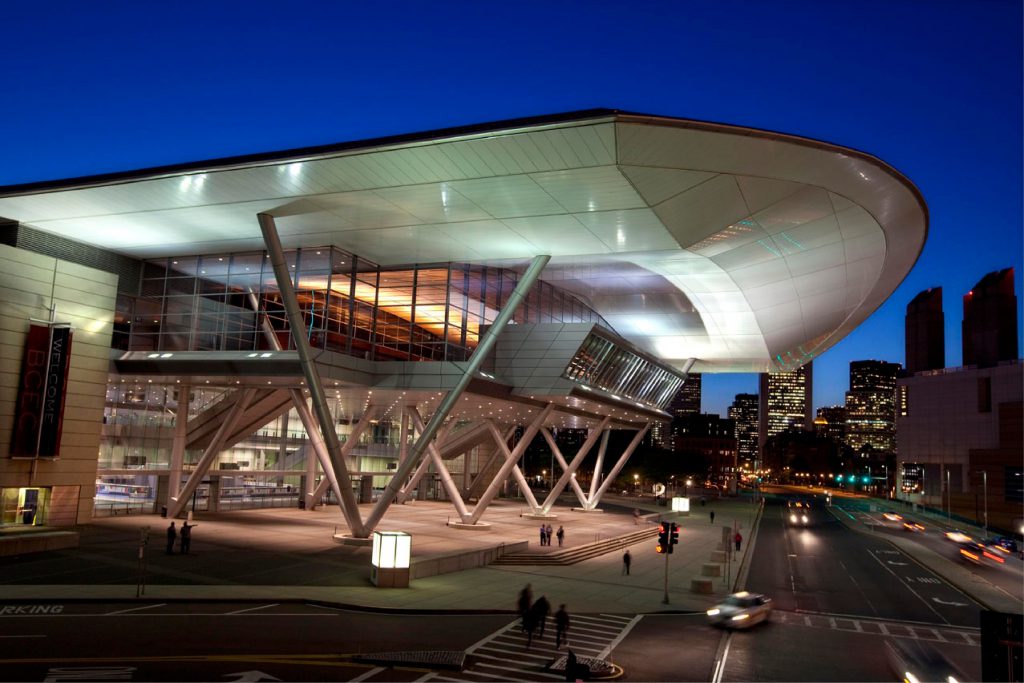
News and notes from Seafood Expo North America in Boston, Mass., USA, 19-21 March, 2017. Posts by James Wright, Editorial Manager of the Global Aquaculture Alliance.
Chilean salmon producer set to launch aquafeed-efficient farmed coho
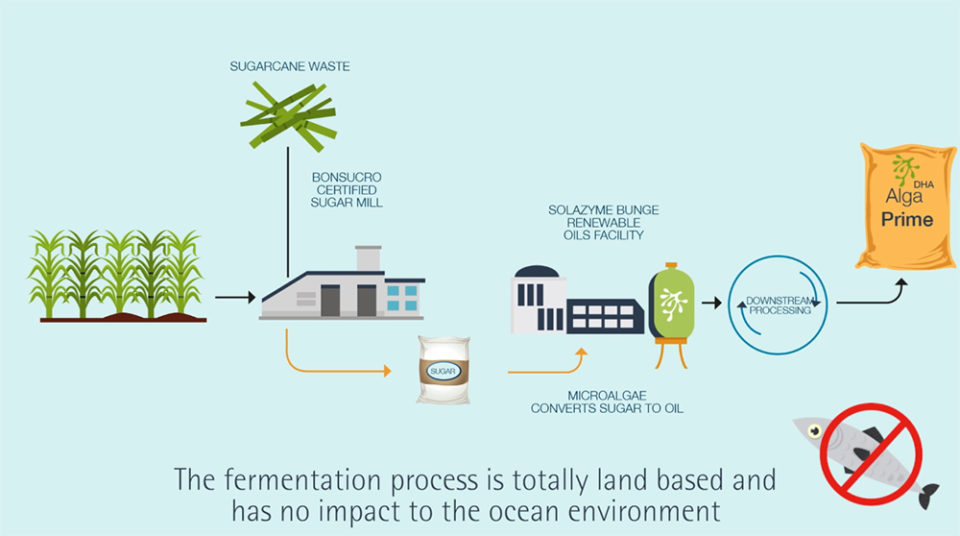
A new farmed Pacific coho brand launched this week at Seafood Expo North America, called Silverside™, claims a forage fish dependency ratio (FFDR) of just 0.5 kilograms, a level that would make it a leader in farmed salmon sustainability.
The sales director for BluGlacier, a jointly owned sales company serving the North American market established by Ventisqueros and Blumar, told the Advocate at the Expo that the product will be available to the U.S. and Canadian markets this October.
With the farmed salmon industry using an average FFDR of 1.5 kilograms, the super-low feed used to make the product makes it the industry’s “first net salmon producer,” said Chris Fream, sales director at BluGlacier. FFDR is analogous to the Fish-In-Fish-Out (FIFO) ratio, which measures the number of kilograms of wild fish utilized to produce 1 kilogram of farmed salmon.
The feed being used is produced by BioMar and it includes fermented marine algae meal, manufactured by TerraVia, that is rich in omega-3 fatty acids.
José Luis Vial van Wersch, CEO of Ventisqueros, added that it is important for salmon producers to focus on the nutritional aspects of the end product and to assure consumers that the fish being produced delivers on the health benefits it promises.
“Absolutely, it’s important,” he said. “Omega-3s aren’t just for [the health of] human beings. It’s for the fish, too.”
Fream, noting that two other salmon producers in Norway were already using the feed, was confident in the low FFDR ratio claim. In fact, the Silverside™ product was developed with the clear goal of attaining a yellow (or good alternative) rating from the Monterey Bay Aquarium’s influential Seafood Watch program
“We, as an industry, have not been able to communicate our efforts in sustainability,” said van Wersch, estimating initial production of 35,000 to 40,000 metric tons. “While it’s not big production, it’s a big step for aquaculture to be able to show consumers that salmon is a sustainable protein.”
Aquaculture advocates share tales of struggles and success
At a somewhat unusual conference session at Seafood Expo North America in Boston, Mass., USA, a number of experienced aquaculture professionals shared heartfelt testimonials about the power of aquaculture to feed a growing global population and bring economic benefits to developing nations around the world.
“We’ve all got stories,” said emcee Neil Anthony Sims, the co-founder and co-CEO of Kampachi Farms, based in Kona, Hawaii, and La Paz, Mexico.
With the unwieldy but compelling title, “Four Fish Times Forty to the Fore – Documenting Oral Histories of Environmental Stewardship,” the town hall format allowed at least a dozen speakers to grab the microphone for brief, and sometimes wildly entertaining, testimonials about aquaculture. The idea, said Sims, was to use storytelling to continue the work done by author Paul Greenberg, whose book “Four Fish” was a New York Times bestseller (2010, Penguin Books).
“Greenberg personalized what was to the public this mystical idea of farming fish that had been misconstrued to be mainly industrial,” said Sims.
Bill Dewey, director of public affairs for Taylor Shellfish in Shelton, Wash., USA, shared with the audience how his company 10 years ago worked with small communities in rural Washington to raise funds and upgrade septic systems in areas where the company had shellfish operations. During one of the initial meetings, Taylor was “the only shellfish grower brave enough to go,” said Dewey, but through its community relations efforts it completed the project and built the social license it needed.
Scott Nichols, founder of consulting group Food’s Future, said the establishment of tilapia farms in Malawi – a project he worked on several years ago – helped local villages provide food for their people and generate revenue to build their communities and the necessary services they lacked.
“The first goal was to provide fish for the village. Then, assistance to market and sell the fish into adjacent villages without farms. The profits from those operations were funneled back into clinics and services for AIDS patients,” said Nichols. “In three years, they increased their fish consumption by 150 percent in the various communities, established stable businesses and income, the drain of young people slowed dramatically and it provided medical care for people there. It is a fine way of using what we can get from aquaculture to provide better nutrition and better public health in advancing a community. It continues to provide education and really good food for people.”
Other speakers included Sebastian Belle, executive director of the Maine Aquaculture Association, who told the tale of oyster grower Bill Mook of Mook Sea Farm and how he displayed the linkages between aquaculture and its stewardship of the local environment.
After suffering through two years of failing year classes at his oyster hatchery in Maine, Mook found himself in a “make or break, desperate situation” where his young oysters were mysteriously dying, said Belle.
After doing water analysis, Mook discovered unusually high amounts of acetone in the water, in addition to other chemicals that didn’t belong in the Damariscotta River.
“He discovered a guy running a commercial port-a-potty business in a residential neighborhood, who had illegally buried big tanks and was dumping the residues. He had to pay by the gallon to dispose of the waste,” said Belle.
“If Bill had not been there, nobody would have discovered what was going on. His larval failure was the indicator that triggered [the investigation]. Nothing else would have spotted that. Aquaculture growers are hugely vested in the local environment, and are often the people who spot what’s going on long before others. We depend on a clean environment.”
Other speakers included Josh Goldman, CEO of Australis Aquaculture; Jacqueline Claudia, CEO of LoveTheWild; and numerous members of the audience who made impromptu appearances, including esteemed University of New England Professor Barry Costa-Pierce, who is a member of the Global Aquaculture Advocate’s Editorial Advisory Board.
Open Blue Cobia Fillet wins new-product award, wows with virtual reality exhibit
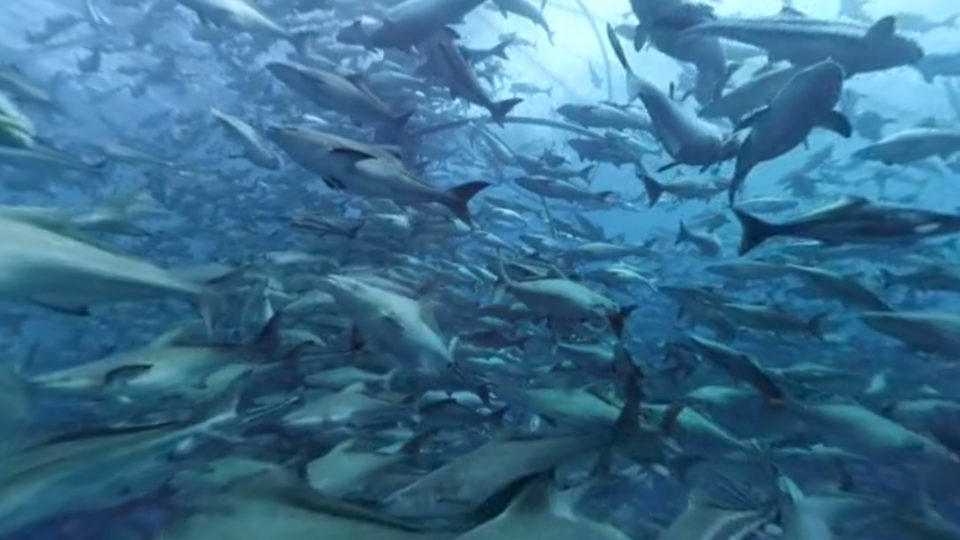
Open Blue, an offshore aquaculture company operating off the coast Panama, won the “Best New Foodservice” Seafood Excellence Award for its Frozen Open Blue Cobia Fillet on Sunday, 19 March, at Seafood Expo North America in Boston, Mass., USA.
Company founder Brian O’Hanlon told the Advocate that the individually vacuum-packed (IVP) fillet, a skin-on and collar-on product, is all about convenience for buyers.
“Cobia is a great substitute for other high-value whitefish,” said O’Hanlon. “This product has enormous applications. It’s extremely versatile.”
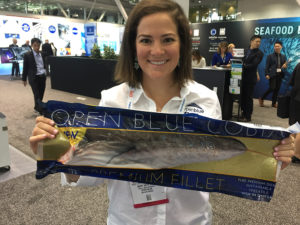
Open Blue, which has traditionally focused on sales of whole fish, has introduced a few value-added products to “make life easier” for chefs. Aside from the fillet, the company also offers portions for retailers that help them manage their fresh fish inventory.
Open Blue was also offering guests to its booth (No. 1859) a virtual reality tour of its offshore operations, which include the patented Sea Station technology from InnovaSea. Both companies are part of the Cuna del Mar portfolio.
The company has also achieved four certifications – three-star Best Aquaculture Practices, British Retail Consortium, Friend of the Sea and GlobalGAP – and will be pursuing Aquaculture Stewardship Council certification as well.
“[Certification] may not be the first question we’re asked,” said O’Hanlon, when meeting new buyers, “but it comes up soon after the first.”
Seafood Excellence finalists were selected via a screening process and a panel of expert judges – seafood buyers and industry experts from the retail and foodservice sectors – selected the winners following a live tasting at the exposition.
GAA signs MoU with JD.com in reach-out to Chinese consumers
The Global Aquaculture Alliance recognized China’s largest e-commerce company by revenue, JD.com, at Seafood Expo North America on 19 March for raising awareness of responsible aquaculture and food safety to Chinese consumers through its perishable foods division, JD Fresh Food.
Through its Best Aquaculture Practices (BAP) division, GAA signed a Memorandum of Understanding (MoU) with JD.com to promote sales of farmed seafood products originating from BAP-certified facilities during a special fresh food promotional week on JD.com beginning March 24.
“E-commerce is an exciting, new market for global seafood trade, and JD.com is a pioneer in these efforts with their fresh food platform for the China market,” said Steven Hart, VP of GAA. “The strength of JD.com, which allows users to purchase fresh or frozen seafood and have it delivered that same day, allows us the unique opportunity to build the BAP brand directly with the Chinese consumer.”
GAA’s Wally Stevens named a Seafood Champion finalist
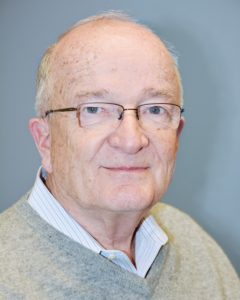
Global Aquaculture Alliance Executive Director Wally Stevens was named a Seafood Champion finalist by the environmental organization SeaWeb earlier this week, and was recognized at a breakfast on Monday, 20 March, at Seafood Expo North America in Boston, Mass., USA.
Stevens was one of four finalists in the Leadership category. Other categories include Vision, Advocacy and Innovation.
Winners will be announced at the SeaWeb Seafood Summit in Seattle, Wash., USA, from 5 to 7 June, 2017.
Other aquaculture finalists include Green Wave’s Bren Smith in the Vision category. Smith, a commercial fisherman, has created a replicable, scalable model of integrated multi-trophic aquaculture, which he calls “3D ocean farming.”
And in the advocacy category, Maine shellfish grower Bill Mook of Mook Sea Farm was recognized for his leadership in modeling how shellfish growers can address the threat of ocean acidification.
Aquaculture’s improvements resonate with purposeful millennials
Millennials – the generation of consumers born between 1977 and 2000 – may hold the key to the aquaculture industry’s future success. With $1.3 trillion in buying power, millennials will soon be making most of the food-purchasing decisions, both for their families and for food companies.
Jacqueline Claudia, CEO of emerging seafood brand LoveTheWild, said she was drawn away from her previous career in business-strategy consulting because of all the exciting things happening in wild fisheries and aquaculture sustainability.
“But it wasn’t translating to consumers,” she said during the conference session “Talking to Millennials About Aquaculture” on Sunday, 19 March at Seafood Expo North America in Boston, Mass., USA. 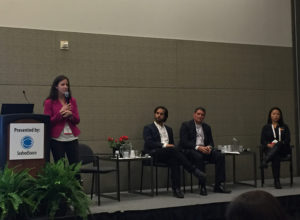
The brand – which has drawn the attention of some notable investors in recent months – aims to make it easy for consumers to have success in the kitchen when preparing seafood at home.
“If we can get people eating seafood twice a week as they should, we’ll have a big impact on population health and the environment,” she said.
Claudia was joined by other panelists associated with aquaculture producers – Skuna Bay Vancouver Island Craft Raised Salmon, Pacifico Aquaculture and Australis Aquaculture – who told their respective companies’ stories of how their brands were built and how they learned about targeting millennials.
Julie Qiu, marketing director for Australis, is a millennial herself and said 80 percent of millennials want to work for companies that care about their impacts, while 72 percent say they would recommend a brand that supports a good cause.
“Millennials look for purpose in what they do,” said Qiu. “Don’t think of millennials as a demographic; it’s more of a set of attitudes and beliefs. They want to convey a sense of who they are through their purchases.”
Dave Mergle, founder and managing director of Skuna Bay, said he conducted exhaustive research about consumers and their perceptions of farmed salmon before even coming up with a brand name. That included extensive interviews with 18 high-end chefs in North America, half of whom are millennials, to gauge their perceptions of the product.
“Our main connection to the world is through our chefs,” said Mergle. “Millennials make up a higher component of the chef world we work in. They’re open to the concept of farming aquatic animals.”
Omar Alfi, managing director of Pacifico Aquaculture in Mexico, said he and his business partner had jobs in finance about six years ago, but didn’t want to do that. They wanted careers that made a difference.
“We realized, this is how we can contribute in whatever small way to some of the problems in the world. And that connects to what millennials want to do as well,” he said. “Aquaculture is quite a business.”
Blue revolution can’t afford to make the same mistakes as the green
Aquaculture cannot make the same mistakes that were made during the green revolution of the past century, which resulted in deep environmental impacts. Avrim Lazar, the director of the Global Salmon Initiative, a leadership initiative of 12 global farmed salmon suppliers, said aquaculture will play an essential role in the future.
“The capacity to create animal protein at a level that is needed or desired with the minimal impact on the earth’s carrying capacity is going to come from aquaculture,” said Lazar. “It’s superior to other forms of animal protein production but it is not good enough.”
Lazar moderated the conference session “The Feed Revolution: Driving Eco-efficiency and Innovation in Salmon Aquaculture” on Sunday, 19 March at Seafood Expo North America in Boston, Mass., USA. He was joined by Ricardo Garcia, CEO of Camanchaca; Carloz Diaz, CEO of BioMar Group; Steven Rafferty, managing director at Skretting; and Michael Tlusty, Director of Ocean Sustainability Science at the New England Aquarium, and a Research Faculty at the University of Massachusetts-Boston.
“GSI is about trying to find a way to accelerate innovation so as to meet sustainability challenges,” said Lazar. “Of all the many challenges we have, the sustainability of feed as aquaculture expands is one we have to solve.”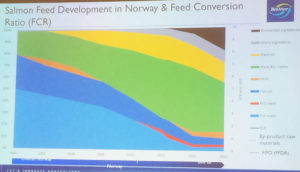
Garcia said joining GSI came down to four elements: It improves environmental performance; provides higher scale for innovations; accelerates change; and results in larger long-term impacts.
Garcia said joining GSI came down to four elements: It improves environmental performance; provides higher scale for innovations; accelerates change; and results in larger long-term impacts.
Garcia said that working to improve industry sustainability and environmental performance will never be complete. The work on aquafeeds is a prime example.
“We don’t plan to eliminate fishmeal. But we also want to grow, to double production, not by using twice as much fishmeal, but by adding supplements,” said Garcia. “GSI is most effective way of accelerating that process.”
Author
-

James Wright
Editorial Manager
Global Aquaculture Alliance
Portsmouth, NH, USA
Tagged With
Related Posts

Intelligence
Boston brainstorm: Getting consumers to embrace aquaculture
In a discussion format somewhat unique to the bustling halls of Seafood Expo North America, aquaculture backers lamented the lackluster U.S. consumer acceptance for farmed fish.

Aquafeeds
Alternative feed ingredient universe to convene at F3 meeting
What started out as a simple yet ambitious contest to drive innovation in the aquafeed sector has evolved into a fully global competition – and collaboration – amongst ingredient suppliers and feed manufacturers.

Aquafeeds
A look at phospholipids in aquafeeds
Phospholipids are the major constituents of cell membranes and are vital to the normal function of every cell and organ. The inclusion of phospholipids in aquafeeds ensures increased growth, better survival and stress resistance, and prevention of skeletal deformities of larval and juvenile stages of fish and shellfish species.

Intelligence
Love connection: Aquaculture investor finds partner in retail seafood brand
For the first time, the Aqua-Spark investment fund has partnered with a consumer brand. With its investment in U.S. company LoveTheWild, the Netherlands-based group seeks to become a trusted voice in aquaculture.

